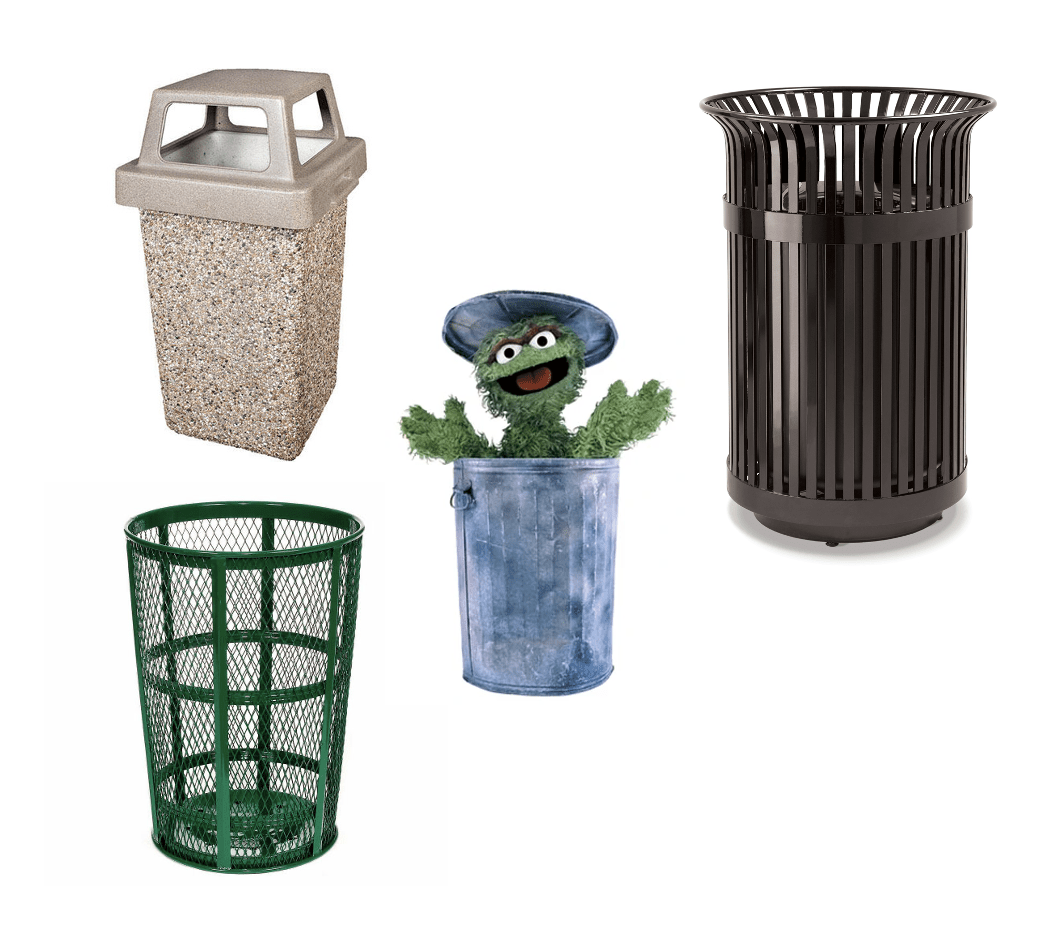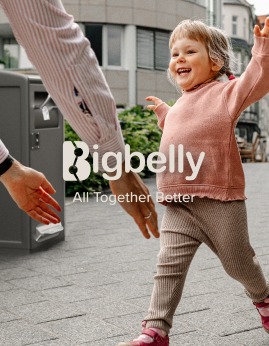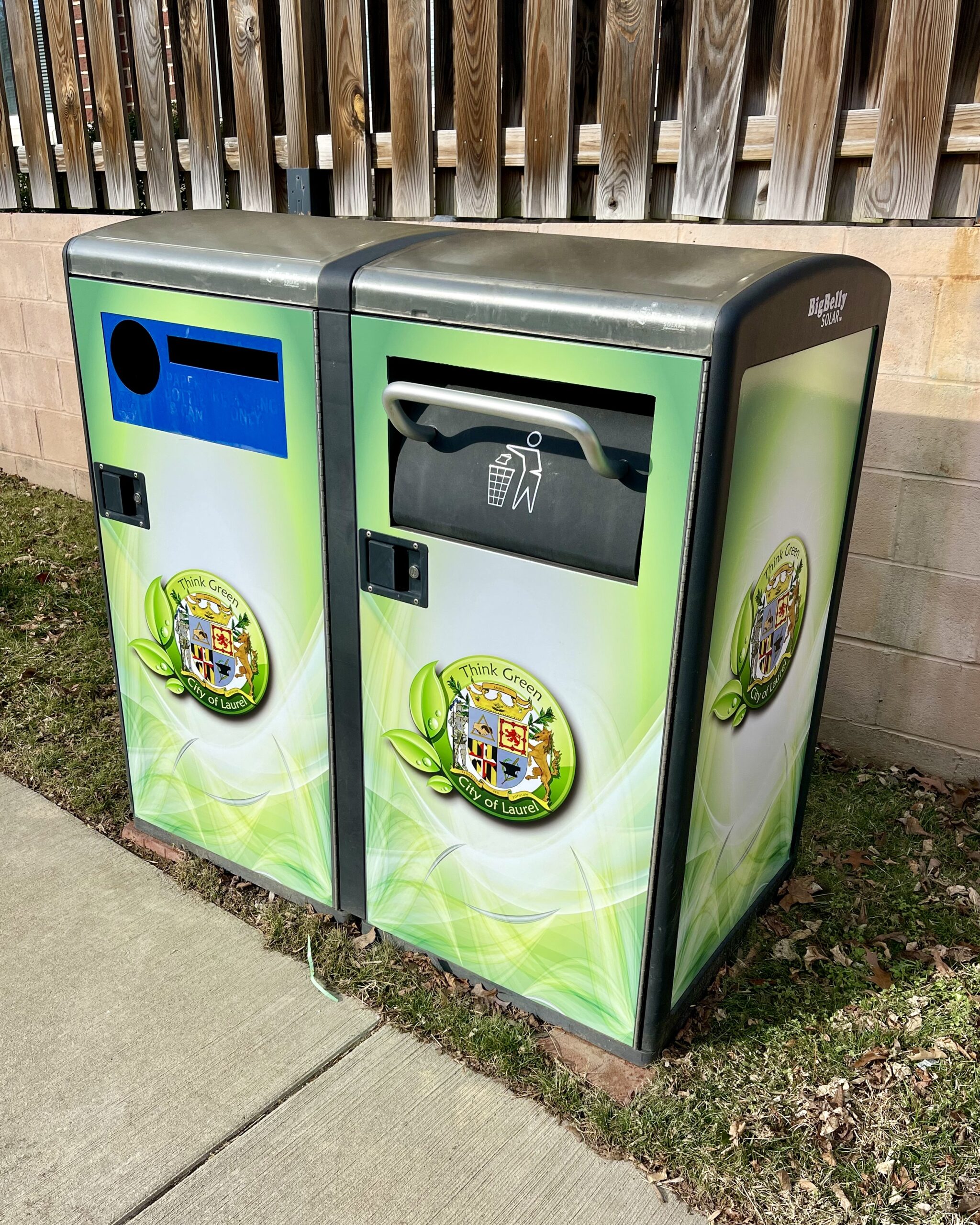The “Has”-Bin: The Traditional Open Trash Can
 Think of a trash can. What comes to mind?
Think of a trash can. What comes to mind?
The classic galvanized metal can? The plastic, rectangular bin, maybe with a cover to deflect rain? The statue-like immovable, pebble-encrusted street bins? Or is it those ornate wrought iron park cans, which may feel like a bit of an upgrade? Regardless of the brand or style, the trash bins we know (and may or may not love) largely have open tops.
Waste is tossed easily into the open container, and subsequently is easily accessible – So what’s the problem? ..and what really can be done to make make a meaningful change in the life of a can?
Accessible waste is a problem – a big one. Because it causes even more problems that we don’t need to have.
Read on…

Why Replace your Open-Top Bins?
Simply changing the “easy in, easy out” nature of a waste bin can change an entire community, full stop.
From aesthetic impact to public health and safety, replacing open-top waste & recycling bins with a fully-enclosed design solves challenges that we take for granted with the traditional can.
1. Visible waste in the Public Space
 Open-Top Problem: Visible waste in a community is a notable deterrent to residents, visitors, and businesses. Public spaces develop less-than-rosy reputations based on the presence of visible waste, affecting negatively the social & economic environment of the space. Visual pollution also has a negative effect on quality of life.
Open-Top Problem: Visible waste in a community is a notable deterrent to residents, visitors, and businesses. Public spaces develop less-than-rosy reputations based on the presence of visible waste, affecting negatively the social & economic environment of the space. Visual pollution also has a negative effect on quality of life.
Contained Solution: A fully-contained bin hides waste in plain sight, completely transforming the cleanliness and curb appeal of a space, whether it be a city downtown, university campus, airport, hospital, or sports stadium. “Making waste disappear” is a simple yet impactful aspect of an enclosed solution.
2. Windblown Litter
Open-Top Problem: Litter and overflows, whether strewn by wind, pests, or trash picking, presents aesthetic, public health, and sustainability challenges. Existing ground litter is not only unattractive; the presence of litter in a given area actively encourages throwing of more litter at that same spot – a trashy snowball effect, if you will. Litter also presents a physical safety risk to pedestrians and animals, as it may contain materials such as broken glass, blades, or needles. Existing ground litter attracts pests and breeds bacteria; increasing the risk of disease spread. Regarding sustainability: litter is a known, highly problematic environmental pollutant, and litter that contains recyclable material is often not diverted into a proper stream.
Contained Solution: Enclosed bins (especially with smart sensing capability and compaction) prevent nearly eliminate litter by keeping waste contained, stopping the negative aesthetic snowball effect, keeping dangerous materials completely separate from public interaction, not attracting pests to the area, and minimizing destructive environmental side effects.
3. Pests
Open-Top Problem: The open top bin, in most public spaces, is the most prominent food source for pests. With pests come the risk of disease spread, property destruction, further infestation, and ecosystem imbalance. Public spaces spend an exorbitant amount of time, money, and labor resources addressing the presence of existing pests, but struggle to address the cause.
Contained Solution: Contained bins cut pests off from that major food source, a powerful preventative measure that reduces the need for reactive pest control measures. In a study by New York City, introducing Bigbelly waste & recycling bins reduced the rat population in NYC parks in 95% (learn about NYC’s Case Study HERE). Enclosed bins keep rodents & birds from creating pest-strewn litter, and keeps flies & bees away from residents.
4. Trash Picking

Open-Top Problem: Cities and downtown districts specifically face problems with trash picking, whether it be for the purpose of collecting recyclables or otherwise. Municipalities who struggle with trash picking must allocate resources to deal with cleaning up strewn trash and managing recycling programs.
Contained Solution: Once waste is deposited into an enclosed bin, it stays there. Especially using a Hopper interface that completely eliminates access to the inside the bin, pedestrians are physically unable to retrieve trash though the disposal interface. The inability to retrieve trash & recyclables deters people with such intention from congregating in the area, and is also helps to reduce vandalism.
5. Recycling & Organics Contamination
 Open-Top Problem: One of the greatest challenges for spaces who introduce recycling & compost programs is cross-contamination with the waste stream. Recyclables and organic materials that are too contaminated with waste cannot be processed, which often makes diversion efforts unsuccessful. An open top recycling bin can simply become a trash can with more bottles in it.
Open-Top Problem: One of the greatest challenges for spaces who introduce recycling & compost programs is cross-contamination with the waste stream. Recyclables and organic materials that are too contaminated with waste cannot be processed, which often makes diversion efforts unsuccessful. An open top recycling bin can simply become a trash can with more bottles in it.
Contained Solution: Enclosed bins keep each stream separate and prevent cross-contamination, which is ideal for public space recycling and compost programs. Easily accessible, clearly-marked (bonus points for public messaging panels and smart diversion measurement) ensure that public programs are effective, and do not waste investment and labor resources.
“A Bigbelly for Everywhere” – New Products!
A Right-Sized Solution at a Right-Sized Price: Bigbelly’s new and expanded portfolio includes a suite of bin types with different capabilities at a range of price points. Compacting or non-compacting, smart or not-smart, your choice of various waste interfaces.
Want to Learn More about Bigbelly’s Expanded Solution?





